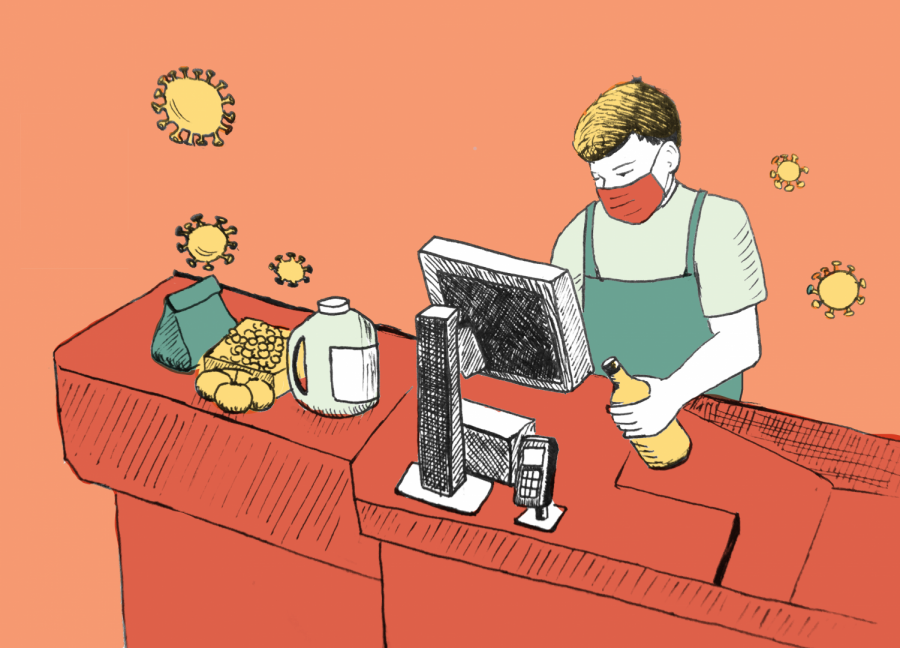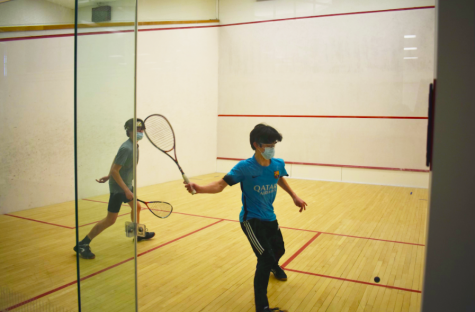Zoomers and Essential Workers: An Ethically and Strategically Flawed Approach to Battling Covid-19
A middle-aged man drips with sweat as he picks up the package he’s delivering. The combination of his mask, his asthma, and the late-spring heat makes it hard for him to breathe. He places the box on the doorstep and gets back in his delivery truck to go drop off the next package. Inside this house where he has just made a delivery, a millennial woman sits in a home-office chair wearing pajama pants and a collared shirt. She talks to a coworker through her Zoom computer screen while enjoying the AC-filtered air.
This scene, although fictional, is all too realistic.
When the coronavirus pandemic hit, people across the country began “locking down” in their homes trying to slow the spread. But it’s impossible for everyone to lock down. Grocery stores, for example, need to stay open, which means that grocery store employees, delivery personnel, and food manufacturers must continue working.
It is important to acknowledge that in any epidemic, immunity in the population is what reduces infections (this is what vaccines aim to do as well). Immunity is not a “strategy.” Any mitigation plan inevitably exposes some group of people and creates some immunity in that population. The question is which population builds the immunity.
In a hard lockdown plan as we have implemented in many states, it’s built by essential workers and those who cannot do their jobs virtually. While the “Zoom class” — those who are able to work from home and continue to make a living — sequesters away, the essential worker class is still out working on the frontlines. When these working class Americans stay out in the community, many of them contract the virus and thereby contribute to immunity in the population.
The lockdown strategy is both ethically and strategically flawed. It is ethically flawed because we are exposing people based on class instead of based on risk. We put essential workers out on the frontlines causing them to carry the burden of immunity while the “Zoom class” sits back and waits for the storm to pass. Moreover, many highly qualified scientists argue that a strategy that prioritizes protecting higher-risk individuals ultimately results in far fewer deaths across all ages and classes.
Maria Chikina and Wes Pegden, a University of Pittsburgh computational and systems biologist and a Carnegie Mellon mathematician respectively, used data about fatality rates in different age brackets, as well as social interactivity data for the brackets, to model this kind of plan. They found that because the risk of death due to Covid-19 is extremely age-correlated, with people in their 70s having a mortality rate that is roughly 300 times that of those in their 20s and greater than 3000 times that of children, “strict age-targeted mitigation strategies have the potential to greatly reduce mortalities and ICU utilization.”
The most difficult idea to grasp in the Chikina-Pegden paper is that fewer cases do not automatically result in fewer deaths. In fact, cases in young and healthy people create a buffer of immunity which ultimately protects vulnerable people. Conversely, attempting to protect everybody equally fails to place the necessary emphasis and resources into protecting the vulnerable and also delays the development of immunity in the less vulnerable, resulting in a greater overall death toll.
It is critical, however, that those most vulnerable are properly protected as this immunity is developing. Implementing this is non-trivial and requires specific mitigation measures. Three well-known scientists have created the Great Barrington Declaration which clearly explains the logic and implications of the ideas outlined in the Chikina-Pedgen model, and details how to implement such an age-targeted mitigation strategy, or as they call it: “Focused Protection.”
The authors of the Great Barrington Declaration are Dr. Martin Kulldorf, an expert in infectious-disease modeling from Harvard Medical School, Dr. Sunetra Gupta, an Oxford-based mathematical epidemiologist, and Dr. Jay Bhattacharya, a “public health policy expert focusing on infectious diseases and vulnerable populations” at Stanford Medical School.
The Great Barrington Declaration recognizes that our current strategy “lead[s] to greater excess mortality in years to come, with the working class and younger members of society carrying the heaviest burden.” It states that “Those who are not vulnerable should immediately be allowed to resume life as normal. Simple hygiene measures, such as hand washing and staying home when sick should be practiced by everyone to reduce the herd immunity threshold.”
This is by no means a “let it rip” strategy. In fact, it is far from it. It involves critical measures that we must take to protect our most vulnerable population with specific instructions regarding nursing homes, which according to the New York Times are responsible for at least 38% of all Covid-19 deaths (64% in Massachusetts), and a thorough list of FAQs which address possible issues such as multi-generational households.
This is not a “herd immunity strategy,” for there is no such thing. No matter what, herd immunity is the ultimate end of any epidemic. As they say in the Great Barrington Declaration: “For COVID-19, all strategies lead to herd immunity, making it nonsensical to denote one specific approach as a herd immunity strategy just as it does not make sense for airplane pilots to talk about a ‘gravity strategy’ for safely landing a plane.”
What we are doing in many states across the nation is wrong. It is wrong from a strategic standpoint, as a “Focused Protection” plan could result in far fewer deaths in the American population. It is also highly unethical: instead of being based on vulnerability, it is based on class. We must reconsider our strategy and change our mindsets as soon as possible. We must come to terms with what we have been doing to our essential workers. We must then change our strategy to one that differentially protects the vulnerable, for it is more ethical, and is better supported by science. We must change to this kind of strategy in order to take a very crucial step forward in this Covid-19 crisis towards fewer deaths and a more ethical, moral approach to this battle.












